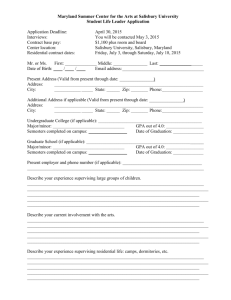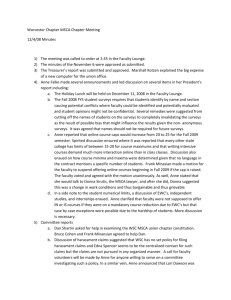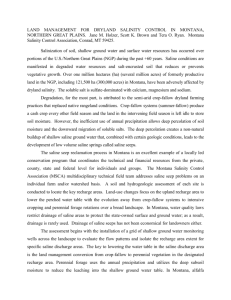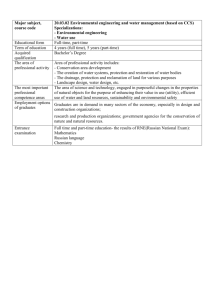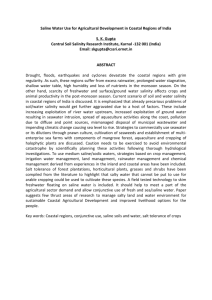MONTANA SALINITY CONTROL ASSOCIATION
advertisement
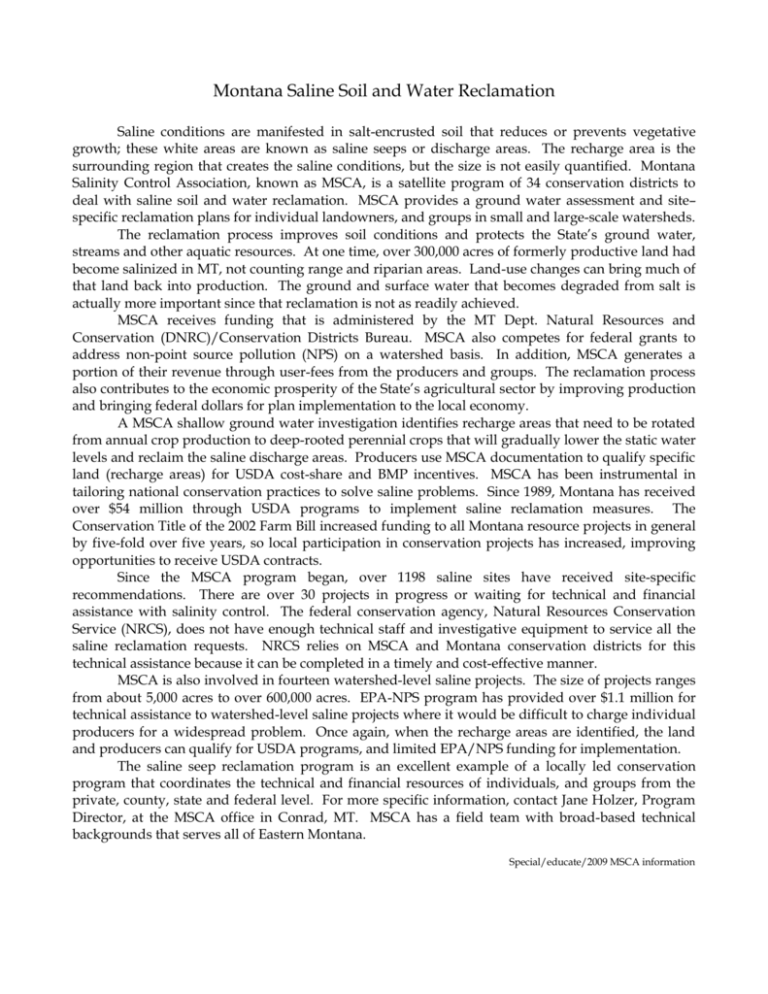
Montana Saline Soil and Water Reclamation Saline conditions are manifested in salt-encrusted soil that reduces or prevents vegetative growth; these white areas are known as saline seeps or discharge areas. The recharge area is the surrounding region that creates the saline conditions, but the size is not easily quantified. Montana Salinity Control Association, known as MSCA, is a satellite program of 34 conservation districts to deal with saline soil and water reclamation. MSCA provides a ground water assessment and site– specific reclamation plans for individual landowners, and groups in small and large-scale watersheds. The reclamation process improves soil conditions and protects the State’s ground water, streams and other aquatic resources. At one time, over 300,000 acres of formerly productive land had become salinized in MT, not counting range and riparian areas. Land-use changes can bring much of that land back into production. The ground and surface water that becomes degraded from salt is actually more important since that reclamation is not as readily achieved. MSCA receives funding that is administered by the MT Dept. Natural Resources and Conservation (DNRC)/Conservation Districts Bureau. MSCA also competes for federal grants to address non-point source pollution (NPS) on a watershed basis. In addition, MSCA generates a portion of their revenue through user-fees from the producers and groups. The reclamation process also contributes to the economic prosperity of the State’s agricultural sector by improving production and bringing federal dollars for plan implementation to the local economy. A MSCA shallow ground water investigation identifies recharge areas that need to be rotated from annual crop production to deep-rooted perennial crops that will gradually lower the static water levels and reclaim the saline discharge areas. Producers use MSCA documentation to qualify specific land (recharge areas) for USDA cost-share and BMP incentives. MSCA has been instrumental in tailoring national conservation practices to solve saline problems. Since 1989, Montana has received over $54 million through USDA programs to implement saline reclamation measures. The Conservation Title of the 2002 Farm Bill increased funding to all Montana resource projects in general by five-fold over five years, so local participation in conservation projects has increased, improving opportunities to receive USDA contracts. Since the MSCA program began, over 1198 saline sites have received site-specific recommendations. There are over 30 projects in progress or waiting for technical and financial assistance with salinity control. The federal conservation agency, Natural Resources Conservation Service (NRCS), does not have enough technical staff and investigative equipment to service all the saline reclamation requests. NRCS relies on MSCA and Montana conservation districts for this technical assistance because it can be completed in a timely and cost-effective manner. MSCA is also involved in fourteen watershed-level saline projects. The size of projects ranges from about 5,000 acres to over 600,000 acres. EPA-NPS program has provided over $1.1 million for technical assistance to watershed-level saline projects where it would be difficult to charge individual producers for a widespread problem. Once again, when the recharge areas are identified, the land and producers can qualify for USDA programs, and limited EPA/NPS funding for implementation. The saline seep reclamation program is an excellent example of a locally led conservation program that coordinates the technical and financial resources of individuals, and groups from the private, county, state and federal level. For more specific information, contact Jane Holzer, Program Director, at the MSCA office in Conrad, MT. MSCA has a field team with broad-based technical backgrounds that serves all of Eastern Montana. Special/educate/2009 MSCA information

